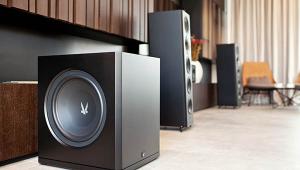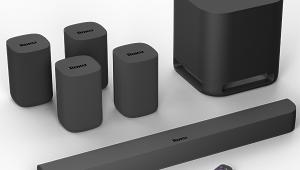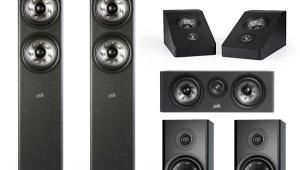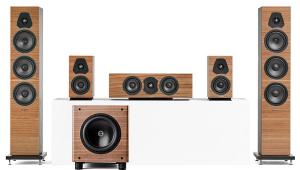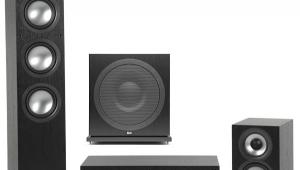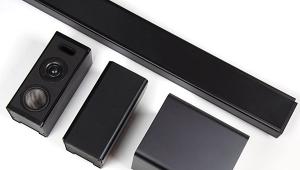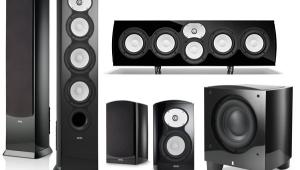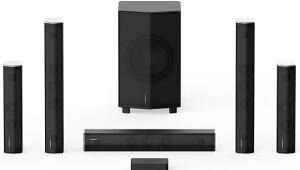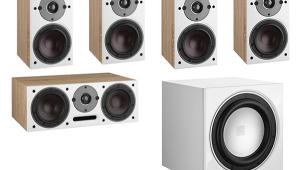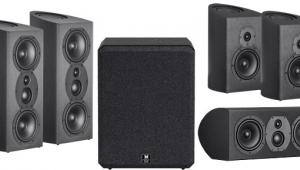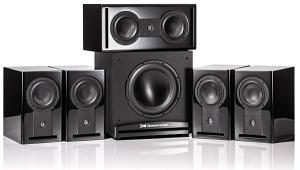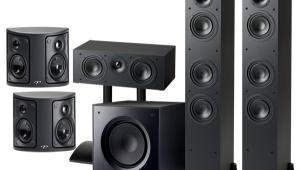Monitor Audio Silver 7G Surround Speaker System Review
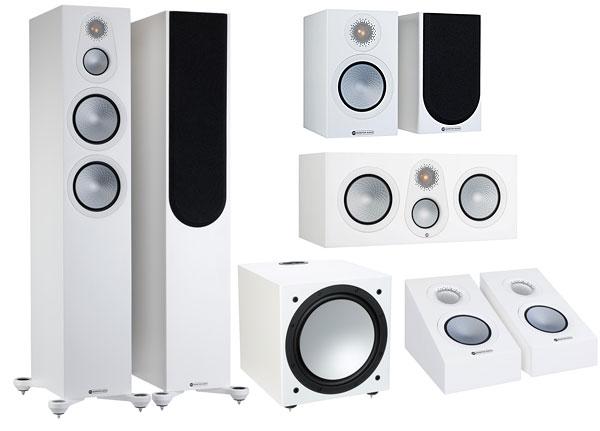
AT A GLANCE
Plus
Crisp, clear sound
Nice depth
Tight imaging
Excellent fit and finish
Minus
Needs a subwoofer for movies
THE VERDICT
Monitor Audio’s longstanding reputation of delivering great sound and solid value remains very much intact with the new Silver 7G speaker series.
I've reviewed many Monitor Audio speakers over the years. When I lived in California, I reviewed the Silver 10s. Later, after I moved east, I bought a pair of the Silver 10s (actually three of them—long story), and when Monitor released a proper three-way Silver Series center speaker, I acquired one of those, too. When other speakers aren't in-house for review, that Silver trio becomes the core of a Franken-system that includes surrounds, overhead Atmos speakers, and subwoofers from other brands.
The Silver Series, now in its 7th generation—hence the 7G designation—has evolved continuously over the years, both in refinement and, not surprisingly, price (Monitor Audio is hardly alone here). The speakers are designed at Monitor's headquarters in the U.K. and built in a company-owned plant in China. For this review, we assembled a 5.1.2 system comprising a pair of Silver 300 7G towers—the second largest of three floorstanders—the new Silver C250 7G center speaker, a pair of Silver 50 7G bookshelf models (used here as surrounds), and a pair of Silver AMS 7G Dolby Atmos-enabled modules. The company has yet to offer a 7G subwoofer for its Silver Series, so we completed the system with a single Silver W-12 6G sub.
For more than 30 years, Monitor Audio has been making speaker cones out of a material they call C-CAM (ceramic-coated aluminum/magnesium)—a thin, light alloy of aluminum and magnesium with a ceramic (alumina) layer. The cones are dimpled to increase rigidity using the latest version of a longstanding technique the company calls Rigid Surface Technology (RST II). But the special attention Monitor gives to its drivers doesn't end there: the tweeters used in all of the models under review are mated with the latest version of the company's Uniform Dispersion (UD) Waveguide (UD Waveguide II) and boast an anodized gold finish to improve stiffness and damping. (No, it's not real gold—that would be too heavy for a tweeter).
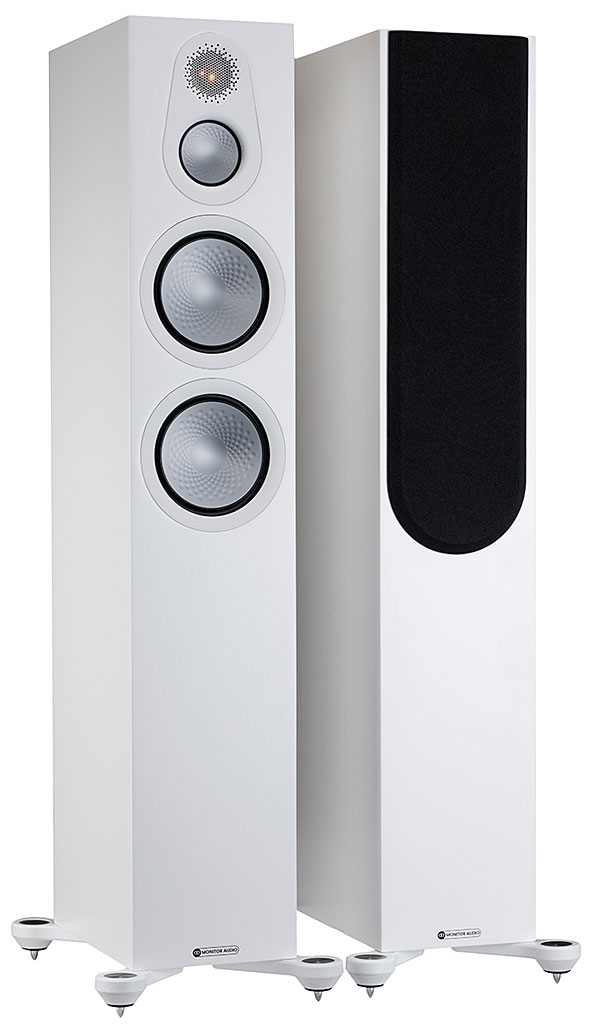
In a technique used in many Monitor Audio speakers, threaded rods are fastened to the backs of the drivers and extend through the rear of the cabinet where they are tightened down by visible bolts. The rods secure the drivers to the cabinet, increasing the cabinet's front-to-back rigidity and providing a clean appearance without the need for visible screws in front.
Starting with the all-important front left-center-right speakers, the Silver 300 7G is a three-way floorstander with two 6-inch woofers and a 3-inch midrange crossing over at 750Hz and 2.8kHz. In my test setup, a pair of 300s flank the three-way Silver C250 7G center with its two 5.25-inch woofers and 3-inch midrange, which cross over at 650Hz and 3.3kHz. Handling surround duties, the Silver 50 7G's 5.25-inch woofer hands the signal off to the tweeter at 2.6kHz, while the Atmos-enabled Silver AMS 7G's 5-inch woofer crosses over to the tweeter at 2kHz. The specified dimensions of the woofers do seem a little generous; the 300's "6-inch" woofers, for example, measured no more than 5.25-inches across, including surround.
The Silver 300 and Silver 50 are both ported and tuned to 40Hz and 58Hz, respectively, and the 300 has two sets of terminals to accommodate bi-wiring or bi-amping. Foam plugs are provided for sealing the ports (the Silver 300 has two, the 50 one—both in the rear), which might be beneficial in some situations. I left all of the ports open in my setup. The remaining models, including the Silver W-12 subwoofer, are all sealed.
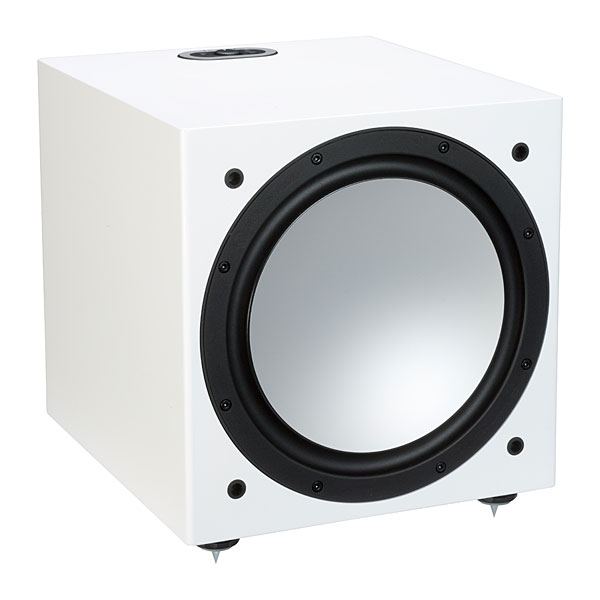
The W-12 isn't much larger than the 12-inch driver it houses—a long-throw C-CAM design driven by a 500-watt class-D amplifier. Rear-panel controls include a low-pass Frequency knob (40-120Hz, continuous) and three switches: Phase (0 or 180°), Power Mode (On or Auto), and Power On. There's also a 12-volt trigger input, a USB input for software updates, L/R stereo RCA inputs and outputs, and a set of LFE in/out jacks. A small panel on top provides a level control along with buttons and a microphone connector for the W-12's Automatic Position Correction (APC) feature. The latter provides a degree of automated DSP room equalization with three operating modes: Music, Movies, and Impact.
All Silver 7G models have magnetic grilles and are offered in five finishes: natural walnut, ash, black oak, satin white, and gloss black; the W-12 is available in satin white or gloss black. The wood finishes are genuine wood veneer, not vinyl, and look first rate. Our review samples were all in satin white but, if given the choice, I'd opt for either gloss black or walnut. For added stability, the Silver 300 towers come with outriggers that can be fitted with spikes (for carpet) or rubber feet. I didn't use the spikes.
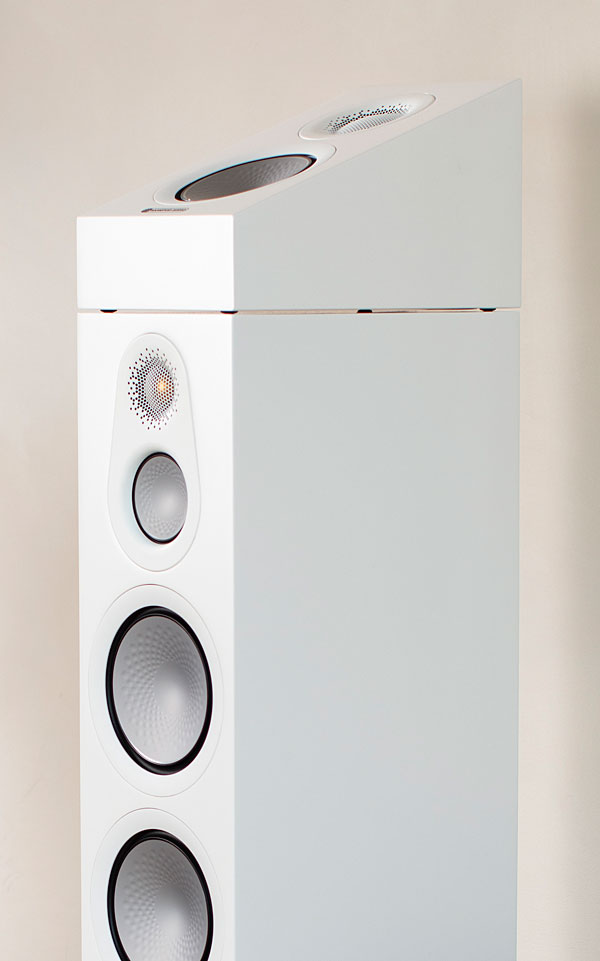
Setup
I placed the Silver 300s at either side of my 96-inch-wide projection screen, about 4 feet out from the wall behind them and angled in toward the center seat. The closest sidewall was about 3 feet from the left speaker. The Silver 50 bookshelf speakers, used here as surrounds, were positioned high up near the back of the room (the room cannot accommodate Dolby's recommended positioning—on the sides of the room, behind the listening position and just above ear height). Finally, the pair of Silver AMS Atmos modules were positioned atop the front left and right Silver 300s, firing upwards at an angle, though they didn't make much of a contribution to the overall presentation due to the room's vaulted ceiling; they can also be mounted high on the sidewalls but that isn't practical in my room.
My listening room and setup produces a significant peak between 100 and 200Hz as measured on virtually every loudspeaker I've reviewed in this space. The only way to cure it—and audition speakers as they'd likely sound in a room without this issue—is to use equalization. So, as I've done in the past, I dialed in Audyssey room correction below 300Hz. Above that frequency the room response was left untouched by EQ (except where noted, and apart from nudging the treble control on my Denon AVR-X6700H AV receiver to +1 with some sources.)

